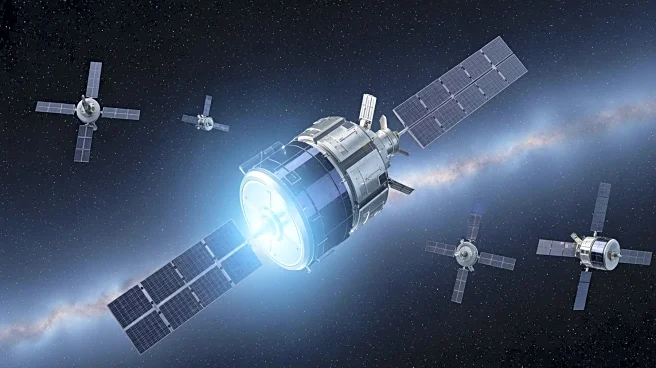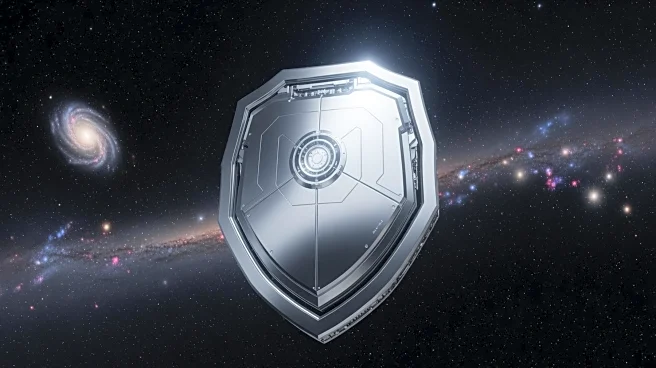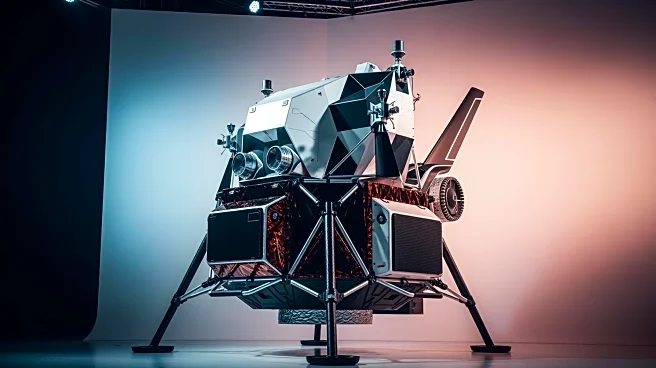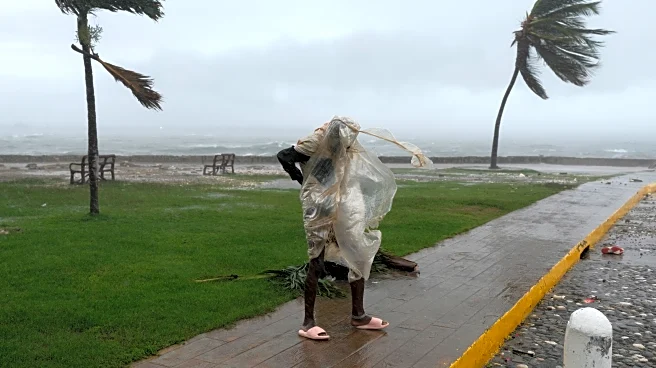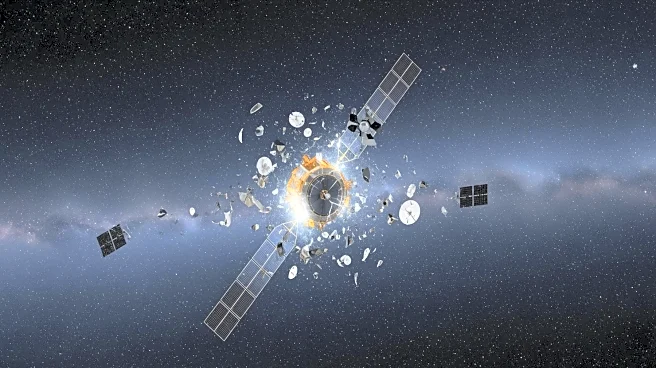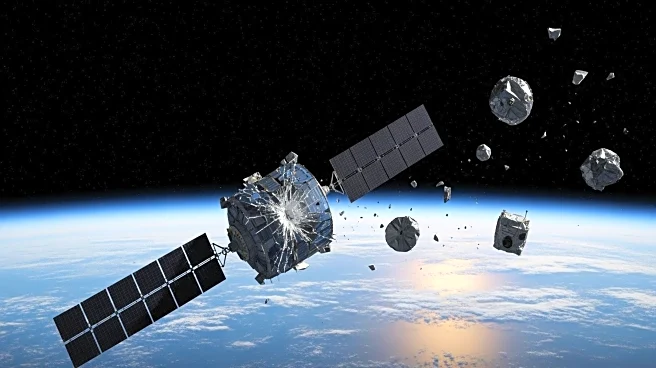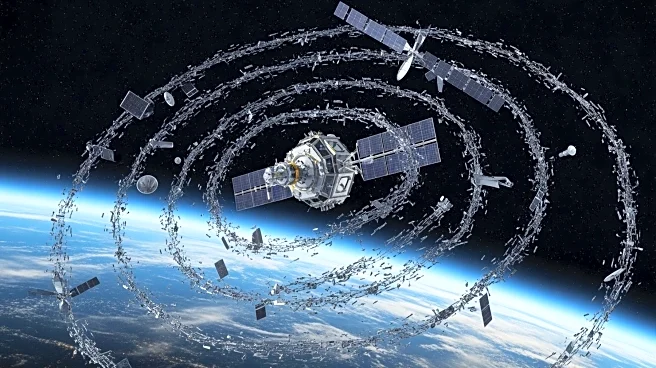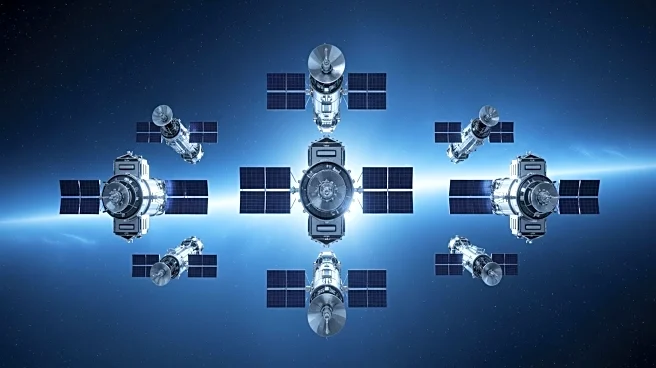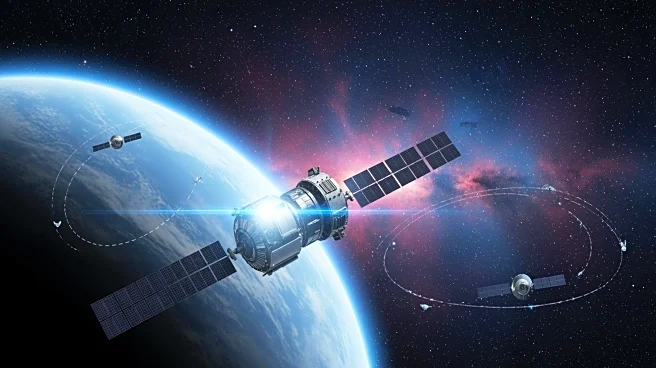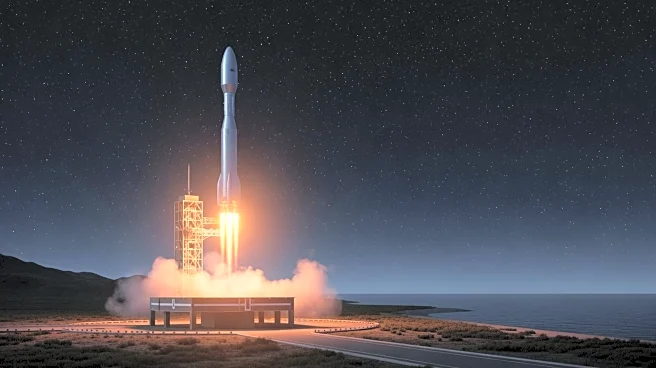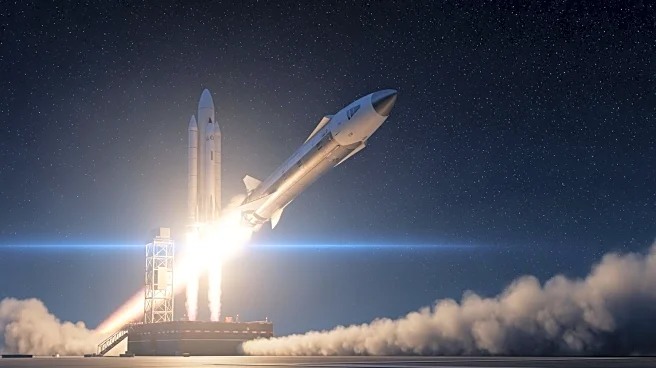What's Happening?
SpaceX successfully launched 29 Starlink satellites into low Earth orbit from Cape Canaveral Space Force Station in Florida. This launch, conducted using a Falcon 9 rocket, marks the 138th mission by SpaceX in 2025, surpassing its previous record of 134
launches in 2024. The Falcon 9 rocket's first stage completed its 15th flight and returned to Earth, landing on the drone ship 'Just Read the Instructions' in the Atlantic Ocean. The mission is part of SpaceX's ongoing effort to expand global internet access through its Starlink satellite constellation.
Why It's Important?
The continued expansion of SpaceX's Starlink satellite network is significant for global internet connectivity, particularly in remote and underserved areas. By increasing the number of satellites in orbit, SpaceX aims to enhance internet service quality and coverage. This development is crucial for bridging the digital divide and providing reliable internet access worldwide. Additionally, the successful reuse of the Falcon 9 rocket's first stage demonstrates SpaceX's commitment to cost-effective and sustainable space operations, potentially lowering the cost of satellite deployment and space exploration.
What's Next?
SpaceX plans to continue its aggressive launch schedule, with more Starlink missions expected in the coming months. The company aims to further expand its satellite constellation, enhancing internet service capabilities. Stakeholders, including internet service providers and global consumers, will be closely monitoring the impact of these launches on internet accessibility and performance. Additionally, regulatory bodies may assess the implications of increased satellite traffic on space safety and orbital debris management.
